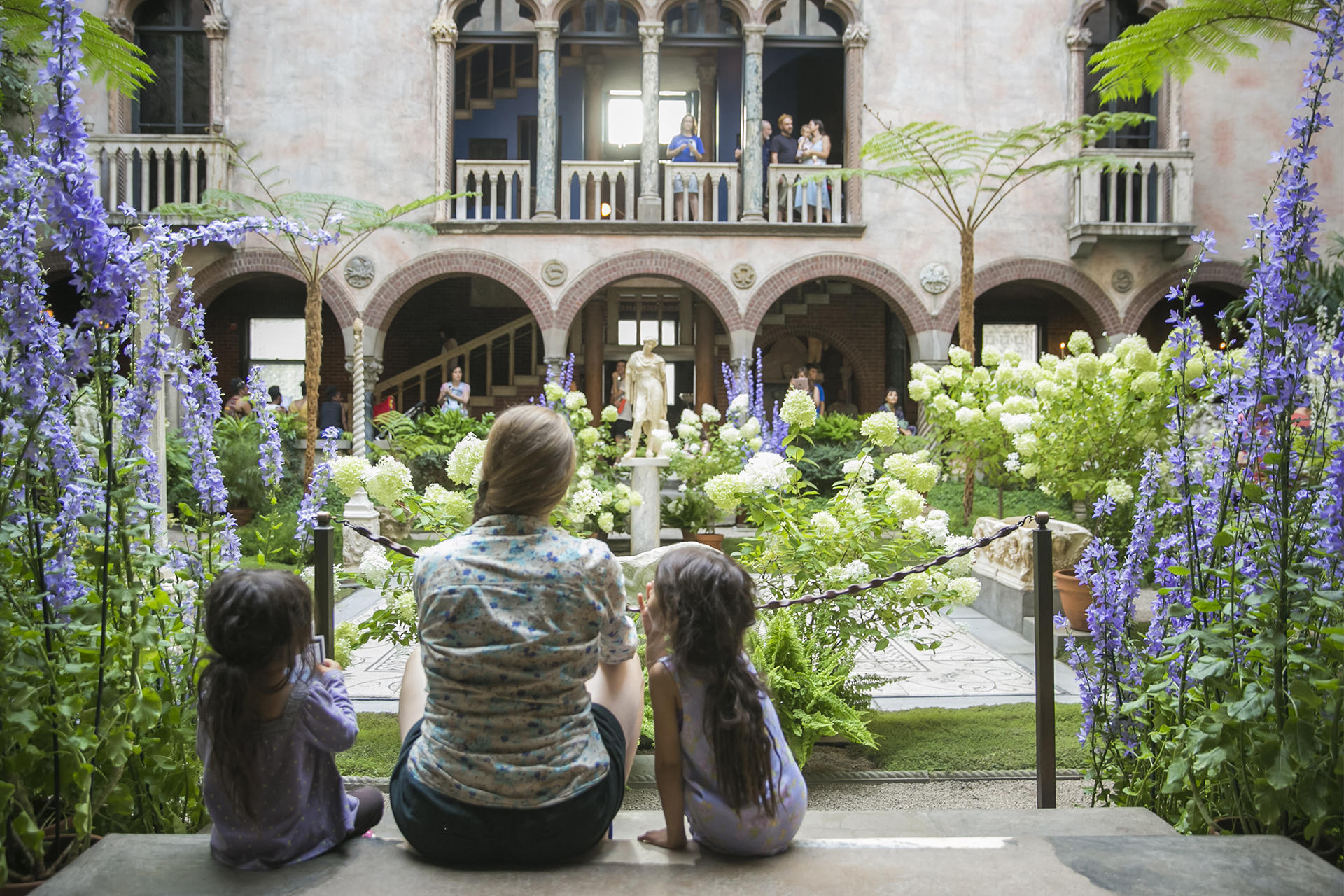[ERIKA RUMBLEY] Hi, I’m Erika Rumbley, Director of Horticulture here at the Gardner. I’m so glad you’re here to see our bellflowers display. We always do blue and white bellflowers, cool colors that feel so refreshing to me on a hot summer day.
I think the way they lean and twist to reach towards the light gives this still space a sense of movement. It reminds me of a kind of wave, like seaweed swaying in the tide; so this display gives me an impression that the whole courtyard is somehow underwater.
Chimney bellflowers, also known as Campanula pyramidalis, were popular during Isabella’s time. Even though this plant is native to the Adriatic coast of Italy, bellflowers also happen to be well suited to growing indoors, under glass. In fact, these bellflowers can reach a huge, statuesque form when they’re sheltered from the elements. To grow them, we begin with thousands of tiny seeds, in the darkest days of winter. During their second year of growth, when they start sending up their spikes, we remove – by hand – every flower as it appears. We do this every day. That’s because every bloom removed allows the plants’ energy to redirect into new buds, and we want the entire plant to be a spiralled wand of starry blooms. And then, once we install them here in the courtyard, we continue to remove, one by one, every wilted flower – so new buds open every day.
And this courtyard installation is just one of about ten different ones we do every year!
The tall tree ferns around the four corners of the mosaic are some of the few elements that are here all year round. They’re not moveable anymore because they’ve rooted themselves in the soil below the building. These types of trees love water; they crave it so much that they broke through their pots searching for more moisture underground. If you look for the bulging part on each tree trunk, that’s the point in their growth when the trees broke through their pots.
Nearly every other plant changes with every installation. There are always key ‘characters’: plants that have a line back to ones that Isabella loved. These include ferns and palms, azaleas, chrysanthemums, and, of course, orchids.
Move around to find a good viewing spot for you; I have a few favorite spots of my own. One is facing the fountain head-on. You can see the fountain along the wall of the courtyard best by moving around the courtyard, to the area between the two columns that have lions on the bottom. On the right and left sides of the fountain you’ll see this stark symmetry of color and texture – and scale – all framed by the height of the space. Another favorite view is from any corner of the courtyard. That’s where you’ll find plants that break the symmetry – maybe a one-off orchid that just opened this morning. And from the upper floors you’ll be able to see the star shaped forms of the tree ferns, and the overall geometry of the plant placements.
When we’re caring for the living collection, we think not just about the health of the plants, but about everyone. So we use organic methods, and that includes weekly releases of a mite that eats other mites.
Horticulturists work in this space every morning, 365 days a year. As we leave, we sweep the gravel paths so that there are no footprints. For me, it’s a fantasy of an almost impossibly exuberant garden, somehow magically untouched by human hands.
Every time you come, the courtyard – and you – will be different. Open yourself to each experience.






